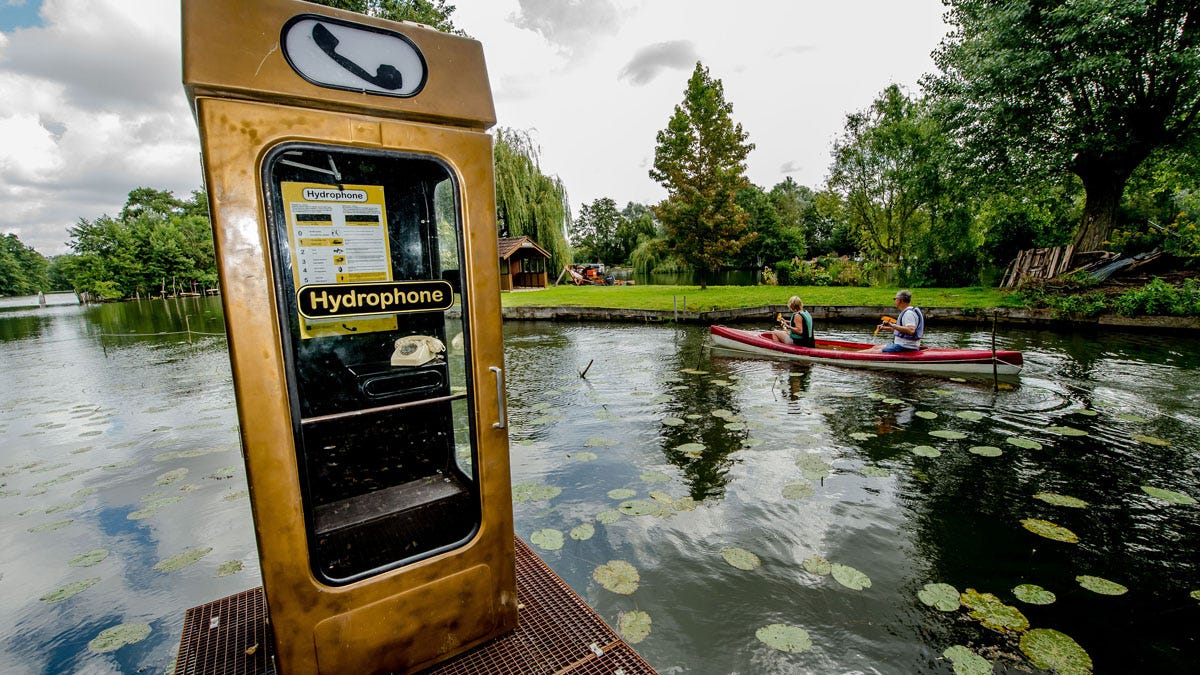
The Hydrophone
Ordinary phone booths are an endangered species in this, the smartphone age. But artists and tech geniuses are reinventing phone booths around the globe.
This booth, located in the Hortillonnages in Amiens, France, is designed to better connect its users with nature. Visitors to the marshy location pick up the receiver and hear sounds of lesser-known wildlife in the area.
A salad bar in a phone booth
This phone booth in London's Bloomsburg Square has been given new life as a gourmet salad restaurant. Spier's Salads, run by Ben Spier, offers a deli-style selection of dishes that include an avocado pesto pasta with cherry tomatoes, and a nectarine-based couscous.
A phone-booth-size library
Many older British Telecom phone booths have been repurposed through the company's Adopt a Kiosk program. This box, in Michaelstone-le-Pit, Vale of Glamorgan, Wales, is now a free community library.
The world's smallest dance club
The creators of Berlin, Germany's Teledisko have turned an abandoned phone booth into the world's smallest dance club. For 2 euros per song, you (and as many friends as you can cram into the box) can dance the night away.
Inside the Teledisko
You get more than just music inside the Teledisko. The 2 euro price includes access to strobe lighting, a disco ball and a fog machine. There are cameras inside, too, in case you want to share your unusual experience on social media.
Sculpture on London Road
British Telecom has made thousands of disused phone boxes available to the public for repurposing. David Mach created this sculpture in Kingston Upon Thames, London in 1999.
Banksy street art
Of course, active phone booths can be made into street art exhibits. This Banksy work is located in Cheltenham, England, about three miles away from the country's GCHQ surveillance agency.
The phone booth aquarium
Artists Benedetto Bufalino and Benoit Deseille turned an old phone booth into an aquarium for the Lumiere London 2016 light festival.
The world's smallest art gallery
Sculptor Kent Viberg turned an old phone booth into this, the world's smallest art gallery. His 'Galleri' has made appearances in a number of towns in South Sweden.
Making a call inside a giant brain
Phone booths in San Paulo, Brazil, are often revamped with a second purpose as public works of art.
More Brazilian craziness
Here's another utterly bizarre Brazilian phone booth.
Make a call and charge your car
To maintain their relevance in the 21st century, a number of old phone booths were converted into dual-purpose electric car charging stations in Madrid, Spain.
Payphones with free Wi-Fi
In November 2014, Australian phone provider Telstra began building free Wi-Fi service into its public phone booths in high profile areas, like this one in Canberra.
NYC's old Internet phones
These older-style TCC Teleplex phones, first installed in 2002, now offer Internet connectivity...at the rate of 25 cents per minute.
Germany has a phone booth graveyard, too
Deutsche Telekom's phone booth graveyard, located near Berlin, is impressive in size.
These brightly colored booths will soon get a second chance at life, though. The company sells them to the public for between 300 and 400 euros a piece.
A phone box turned time machine
Our favorite use for an old phone booth -- or police call box, whatever -- is this particular conversion to a working machine that traverses both time and space.
It looks much bigger on the inside.

